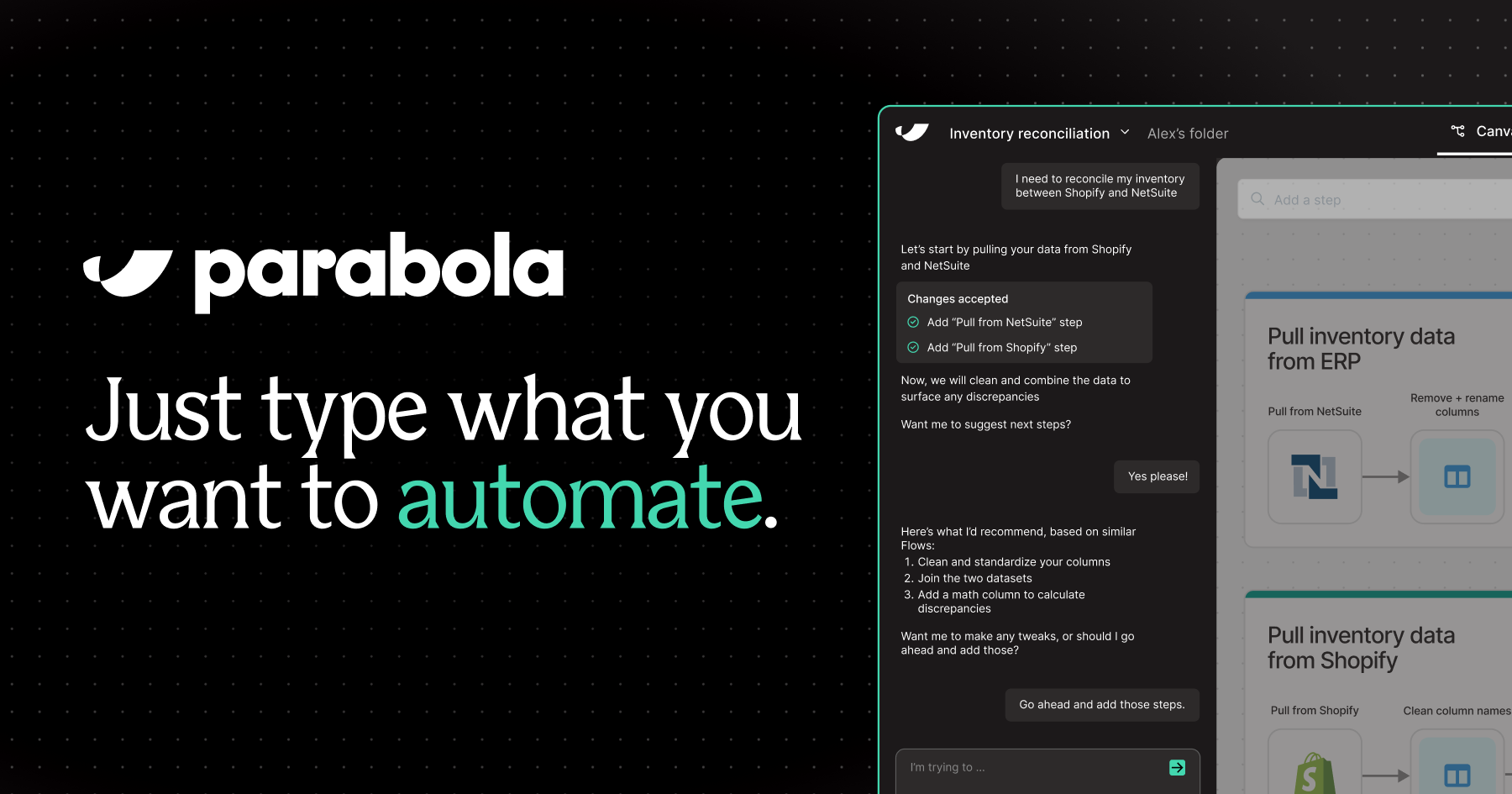Workflows keep businesses running, but manual methods rely on copy‑pasting data, switching between systems, and constantly checking for errors. These outdated approaches drain productivity and create risk. With Parabola, AI‑powered automation eliminates manual busywork, orchestrating complex workflows seamlessly across your tech stack.
Why manual workflows collapse under scale
Operators often stitch workflows together using spreadsheets, email threads, and tedious exports. This fragile system may work when data volumes are small, but as organizations scale, error rates skyrocket and turnaround times lag. A single missed update can disrupt supply chain visibility, reporting accuracy, or customer experience.
AI workflow automation flips this paradigm. Instead of human operators moving data from one tool to another, AI ensures every integration runs on time, every exception is flagged, and every dataset remains synchronized. From automating invoice approvals to syncing sales orders between ERP and CRM, AI removes friction from daily operations.
With Parabola, ops teams become enablers rather than blockers, building workflows once and letting automation handle the execution. The result: faster processes, cleaner data, and happier teams.
Stop patching workflows together manually and try Parabola.
